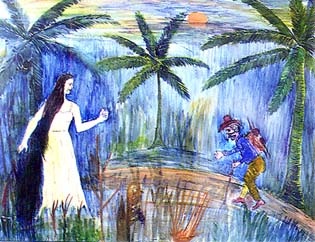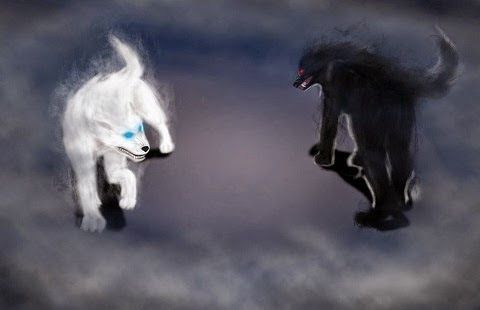Ask most Belizeans their memories of story time, and you’ll be surprised at the kinds of stories we were raised with. No fairytales or knights in shining armors for us, no sir! We’re talking folktales of the Tata Duende, Xtabai, La Llorona, Sisimito, and so much more. Rooted in history and culture, peppered with life lessons and more than a touch of horror, those tales taught children valuable life lessons while sat at their grandparents’ feet.

El Tata Duende

The story of La Xtabai varies slightly among the different cultures of Belize.
With the Tata Duende, we learned not to follow strangers into the woods, to truly listen to sweet words/music and determine the source before falling for lies disguised as truths. With the Xtabai, well, grownups needed to learn to control their drinking (ha!). One story that stands out to us is the story of the Cadejo. We share this with our traveling friends, because, as we learn in the end, every choice has a consequence. Whether it’s good or bad depends on the choice.
“…sometimes you can hear it, like someone is hauling a long, long chain along the streets.”
Belizean villagers, describe the Cadejo as a hairy, goat-like animal or a large, shaggy dog, hence its name, which translates from the Spanish as “tangled hair”. The Cadejo is said to have the hooves of a goat, the horns of a bull, and the tail of a puma or lion, and its flaming eyes and foaming mouth give it an aura of evil. The stories vary, some claiming it is dragging around a long chain behind it, while some say the rattle is actually that of the bones of its victims.

In classic good versus evil, the white cadejo is often declared protective of drunken revelers – perhaps an unexpected night out with friends leading to more than one extra Belikin. The black cadejo on the other hand, is believed to be intent on causing repeat drunkards (alcoholics) to fall terribly ill. The black Cadejo is said to hungrily lick their mouths and follows them for nine days until there is no longer a chance that they will get well. (There seems to be a theme against drinking in our tales…hmmmm)
In relation to travel, many variations of the story tell that there is both a good and bad Cadejo that appear at night and only show up to travelers. The white Cadejo appears to protect them from harm during their journey, whereas the evil black Cadejo is more malevolent, intent on causing harm.

As we expand in the tourism industry, we take the stories of the Cadejo and apply its parallels to choices during travel. It’s as simple as choosing licensed, certified operators with which to take tours with, as opposed to the cheap, off-the-beaten-path guy with a boat or vehicle willing to take you on an adventure that sounds way too good (and cheap) to be true. Common sense would indicate that if you’re with the unlicensed, cheap tour, if something were to happen, there may be no way to salvage a trip. Licensed operators will have emergency contacts and backups in line, insurance and more. So, when in a different country, try and stick to the straight and narrow, and listen to your instinct. The Cadejo may not be a real boogeyman, but safety should never be compromised.

For a less-spooky real-life version, try the adorably dressed up pets during Saga’s annual Pet-Costume contest at their Saga Halloween Spooktacular in October (set for Sunday, November 4th). Any doggie resembling the Cadejo is pure coincidence!


